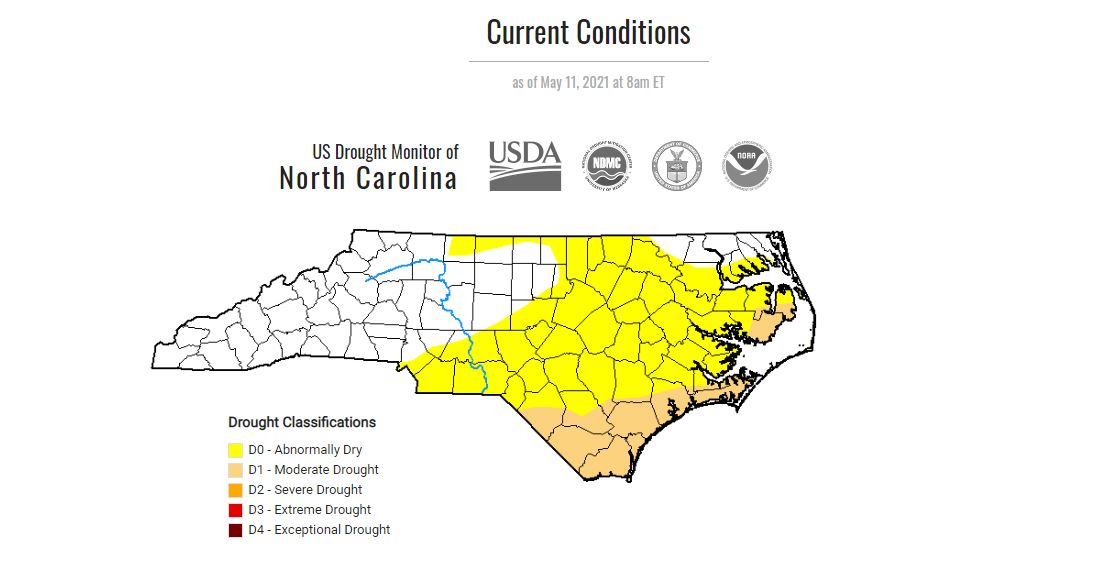
For the first time in more than a year, North Carolina is experiencing drought conditions.
The North Carolina Drought Management Advisory Council identified areas in 12 counties, including some on the coast, as experiencing moderate drought because of an extended period of below-normal rainfall, Department of Environmental Quality officials said Thursday.
Supporter Spotlight
Parts of 38 additional counties in eastern and central North Carolina are also experiencing abnormally dry conditions, and could reach drought status, if dry conditions persist.
The drought map is updated at 9 a.m. every Thursday.
“After a wet winter, rainfall has been below normal since March in much of eastern North Carolina. By May 4, we had parts of 45 counties that were considered to be abnormally dry. Conditions have continued to deteriorate in the southeastern coastal plain and along the coast resulting in the moderate drought declaration,” said Klaus Albertin, council chairman in a statement. “We are not seeing water supply issues in our reservoirs and rivers yet, but residents should follow the water restrictions as they are put in place by their local water systems. Water restrictions help reduce the risk of water shortages if current weather conditions continue”.
Moderate drought, which is the least severe of the four drought categories, stretches from Robeson to Dare counties. Drought categories are based on streamflow, groundwater levels, the amount of water stored in reservoirs, soil moisture, the time of year and other relevant factors for assessing the extent and severity of dry conditions.
“While 2020 ended by becoming our state’s second-wettest year on record, and 2021 started with wet weather through the winter, we’ve seen that precipitation pattern reverse this spring, from having too much rain to suddenly not enough across much of North Carolina” said Corey Davis of the North Carolina State Climate Office. “The southern and central coast continues to miss out on regular rainfall and is now at a deficit of 4 to 6 inches since the beginning of March. Sites including Lumberton, Wilmington, and New Bern are all on pace for one of their Top Ten driest springs on record.”
Supporter Spotlight
This is the first time since November 2019 that the state has experienced any drought conditions. The area of abnormally dry conditions was also extended northward to include an area from Rockingham to Vance counties along the Virginia border.
To learn more about droughts visit https://www.ncdrought.org/education.







